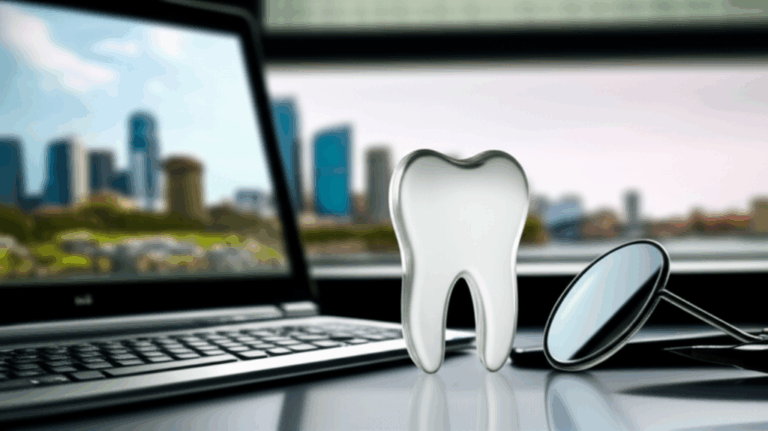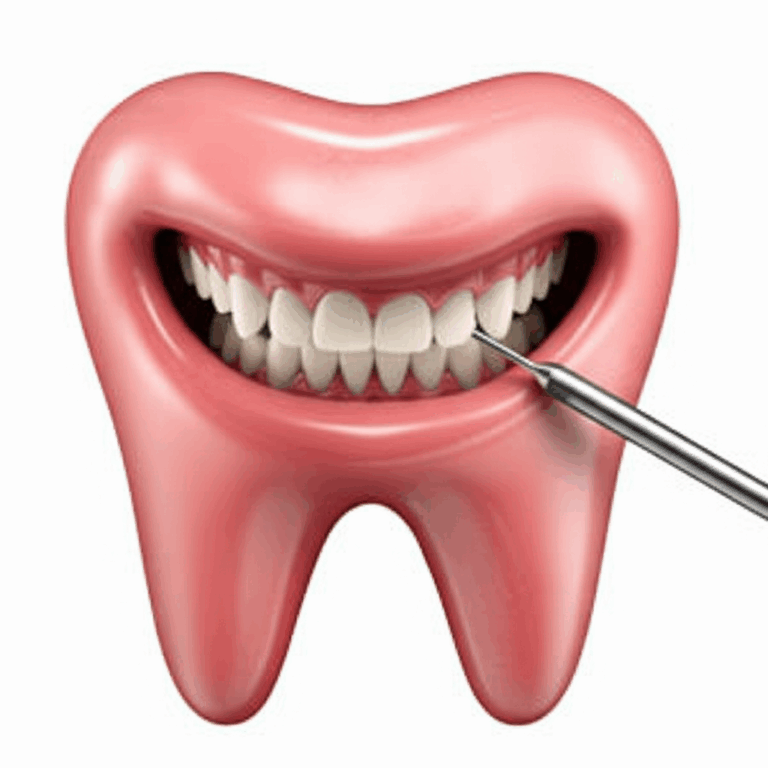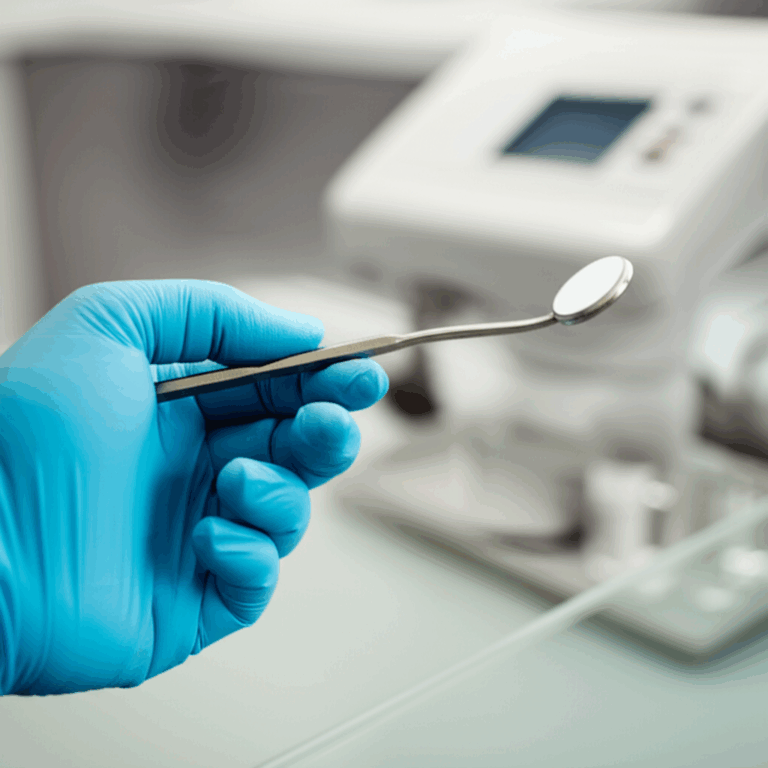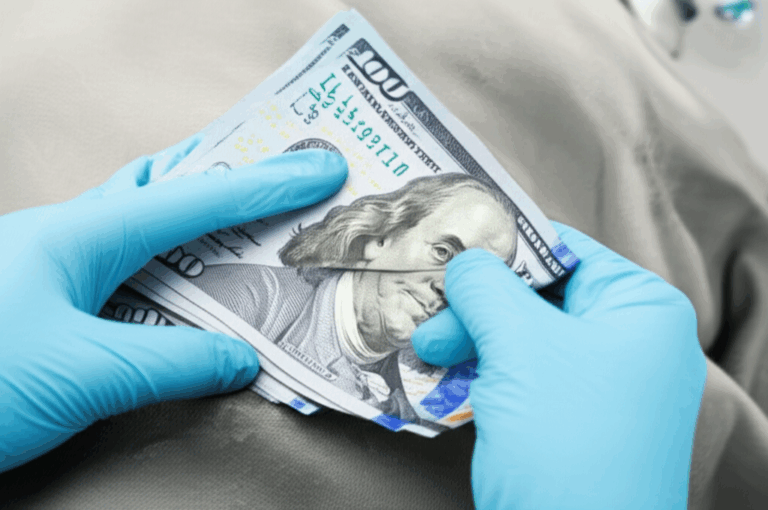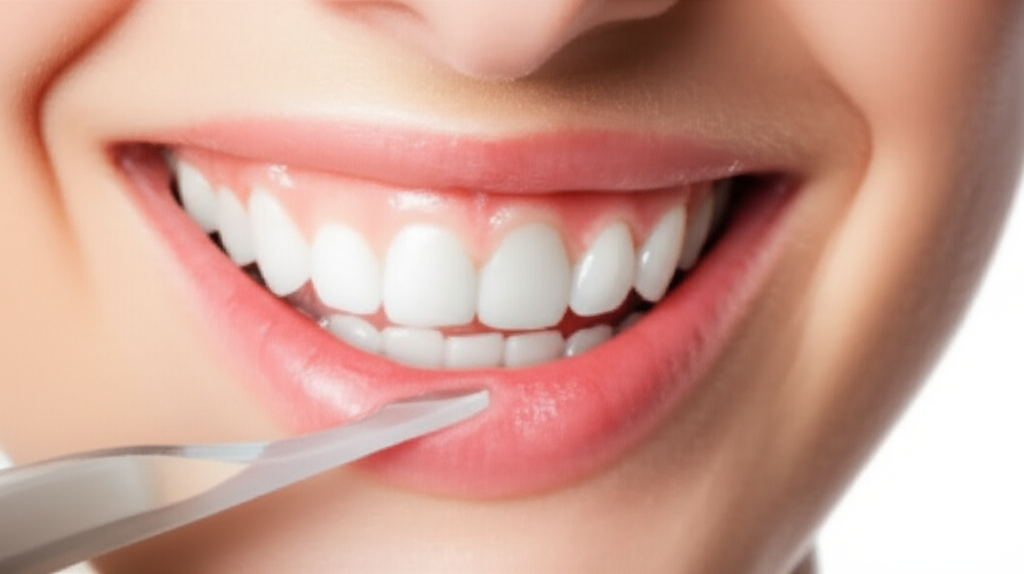
How to Reverse Gingivitis at Home: Your Ultimate Guide to Healthy Gums Without a Dentist
That sudden spot of blood on your toothbrush or the soreness along your gumline—does it worry you? Maybe you’ve noticed your gums are puffy or your breath isn’t as fresh as you’d like, and now you’re searching, hoping you can fix this yourself. You’re not alone, and you’re asking a smart question:
Can I really reverse gingivitis at home, without seeing a dentist?
Let’s break down exactly how you can take back control of your gum health, using simple, proven steps—no white coats, X-rays, or dental chairs needed. I’ll walk you through what gingivitis is, why it happens, and, most importantly, what you can actually do about it, starting today.
In This Article
- Understanding Gingivitis: What It Is and Why It Matters
- The Core Pillars of At-Home Gingivitis Reversal
- Master Your Oral Hygiene Routine
- Harnessing Natural & Home Remedies
- Optimize Your Diet and Nutrition for Gum Health
- Lifestyle Adjustments for Lasting Gum Health
- When Home Remedies Aren’t Enough: Recognizing the Limits
- Prevention is Key: Maintaining Your Healthy Gums
- Conclusion: Taking Control of Your Oral Health
Understanding Gingivitis: What It Is and Why It Matters
What Is Gingivitis?
Let’s keep it simple: gingivitis is the first stage of gum disease. Picture your gums as soft, pink pillows holding each tooth. When plaque—a sticky layer of germs—sits along the gumline too long, those pillows get sore, swollen, and may bleed. Gingivitis means your gums are giving you a heads-up that something needs to change.
Common Symptoms
- Bleeding gums when you brush or floss
- Red or puffy (swollen) gums
- Bad breath that sticks around, even after brushing
- Soreness, sometimes making eating or brushing uncomfortable
The Root Cause: Plaque and Bacteria
Plaque builds up all the time, fed by sugars and starches from your food. If not brushed and flossed away, it gets hard and turns into tartar—a crusty, stuck-on mess at the base of your teeth, making your gums more irritated. The longer this stuff stays, the more it upsets your body’s defenses.
Why Act Now?
Here’s the good news: catch gingivitis early, and you can almost always fix it without any lasting problems. Ignore it, and you could head toward periodontitis—where the bone holding your teeth starts to wear away, and teeth may get loose or fall out. Think of gingivitis as a “check engine” light for your mouth—pay attention now, and you can avoid expensive “repairs” later.
The Core Pillars of At-Home Gingivitis Reversal
Ready to take action? Here’s your guide to getting your gums healthy again at home.
1. Master Your Oral Hygiene Routine
Think of brushing and flossing as regular house cleaning. If you let dust and dirt pile up, it’s harder to clean later. Same goes for plaque.
Proper Brushing Technique
- Electric vs. Manual Toothbrush:
Both are fine, but electric brushes usually get teeth cleaner, especially if you’re not sure about your brushing.
- Soft Bristles are Best:
Don’t scrub hard—think “gentle massage.” Hard bristles can hurt your gums.
- Angle and Time:
Hold your brush at a slant to your gums (45-degrees) and use small circles, two minutes, twice a day. Don’t forget the back teeth, where gunk likes to hide.
Effective Flossing
- Why Flossing is a Must:
Brushing only cleans the outside and tops—“in-between” needs floss or a water flosser.
- How-To:
Gently slide the floss in a “C” shape under the gum, then slide against the tooth. Don’t saw back and forth—this can hurt your gums.
- What If You Hate Floss?
Try water flossers (good for people with bridges or arthritis) or little brushes for bigger gaps.
Antiseptic Mouthwash Use
- Benefits:
A good mouthwash cuts down germs, soothes gums, and freshens breath.
- Pick the Right One:
Use a mouthwash without alcohol—it’s less harsh and less drying.
- How Often?
Rinse after brushing and flossing, especially before sleep.
2. Harnessing Natural & Home Remedies
Looking for something extra? These natural things may help:
Saltwater Rinses
Saltwater can help with swelling and kill germs. Put about half a teaspoon of regular salt in a cup of warm water, swish in your mouth for 30 seconds, then spit. Do this twice a day.
Oil Pulling (Coconut or Sesame Oil)
This old-school trick means swishing a spoonful of coconut or sesame oil in your mouth for 10–15 minutes. It helps pull out germs and may cut down plaque. It’s not instead of brushing—just a gentle bonus.
Hydrogen Peroxide Solution (Diluted)
Mix equal parts of 3% hydrogen peroxide and water—the result is a strong germ killer, but mild enough to rinse. Swish for 30 seconds, spit, and don’t swallow. Try it for a week or two, then take a break.
Aloe Vera
Aloe isn’t just for sunburns. If you have pure aloe gel, you can dab a little on your gums after brushing, or try an aloe-based mouthwash. Aloe helps calm swelling and speed up healing.
Tea Tree Oil (Diluted)
This plant oil is good at fighting germs, but it’s strong—always mix a drop or two in a cup of warm water before using as a rinse, and never drink it. Try a little first to make sure it doesn’t bother you.
Other Herbal Helpers
- Clove oil can help with pain.
- Green tea fights germs and swelling (drink it, don’t rinse).
- Turmeric paste can be gently rubbed along the gumline for swelling.
Simple reminder: Just because it’s natural doesn’t mean it’s always safe. Start slow. If anything feels wrong, stop and get help.
3. Optimize Your Diet and Nutrition for Gum Health
Your food choices matter for your gums too.
Foods to Eat More Of
- Fruits & Veggies:
Leafy greens, berries, oranges, peppers—these have vitamin C and other goodies your gums need.
- Omega-3s:
Fatty fish, chia seeds, walnuts—help your body fight swelling.
- Probiotics:
Yogurt or supplements help balance germs in your mouth.
Foods to Cut Down On
- Sugary Snacks & Drinks:
Soda, candy, cakes—feed the germs that cause problems. Try other options or rinse after eating them.
- Sticky & Starchy Foods:
Chips, dried fruit, crackers—stick in your teeth and feed plaque.
- Acidic Drinks:
Orange juice, sports drinks, and some teas can hurt enamel and bug your gums.
Hydration
Water is great. It washes away food bits, keeps tissues wet, and helps make saliva, which fights germs naturally.
4. Lifestyle Adjustments for Lasting Gum Health
Your gums are part of your whole body, not just your mouth.
Quit Smoking
It’s tough, but smoking lowers your body’s defenses and makes healing slower. Quit, and your gums have a much better chance. Get help if you need it—there’s no shame.
Manage Stress
Stress weakens your immune system and makes gum problems worse. Try deep breaths, walks, music, or anything that helps you relax.
Handle Health Problems
Things like diabetes can make you more likely to have gum trouble. Keeping other health issues in line helps your mouth too.
When Home Remedies Aren’t Enough: Recognizing the Limits
You’ve been really sticking to your cleaning routine for a couple weeks. But your gums are still bleeding, sore, or maybe even your teeth feel a little wobbly. Time to stop and check in.
Signs Your Gingivitis Might Be Getting Worse
- Pain or swelling still there after two weeks of home care
- Gums still bleed a lot
- Big red, purple, or shrinking gums
- Teeth feel loose or start to move
- Pus, sores, or really bad breath that won’t go away
The Difference: Gingivitis vs. Periodontitis
Catch gum trouble early, and you can turn it around. But if the germs get under the gums and start eating away the bone (periodontitis), you can’t fix that at home. Now you need a dentist’s help and maybe special treatments or even a crown and bridge lab if teeth get loose.
Why a Dentist Sometimes Has to Help
Home care can’t get rid of tartar (the hard, stuck-on stuff). Dentists also look for deep infections and have stronger tools—like certain rinses and cleanings—that let you start fresh at home. If you’re not sure, better to visit the dentist. Think of it like going to the mechanic when your car makes a weird noise.
Prevention is Key: Maintaining Your Healthy Gums
Once your gums feel and look better, keep your habits going so gingivitis doesn’t sneak back.
Be Consistent
Brush, floss, and rinse every single day—even if you’re in a hurry or tired. Make it as regular as having breakfast.
Check Your Mouth
Now and then, use a small mirror to look at your gums. Look for color, swelling, and bleeding. Spot problems early, fix them quickly.
Know Your Risks
Ask yourself:
- Am I eating healthy most days?
- Am I managing stress?
- Do health problems make gum disease more likely?
Knowing your risks lets you protect yourself better.
If you use removable dental stuff, like dentures, keeping them clean is super important. See tips from a removable denture lab for help.
Let’s Talk Real-World Results: Data, Stories & What Works
So, can all this really help?
- Most mild gingivitis goes away in 10–14 days if you clean well at home. Bleeding and puffiness often get better in the first week.
- Saltwater rinses and oil pulling are good add-ons—lowering germs and calming your gums, but brushing is still number one.
- Consistency matters most. Studies find gum bleeding drops by about 70% with good cleaning after just a few weeks.
Not sure you’ll get better? You’re not alone. Remember—half to almost all adults get some gingivitis at some point. You can beat it, and it’s worth it.
Your Healthy Takeaway: What You Can Do Right Now
Let’s make this simple:
1. Stick to the Basics
- Brush morning and night (soft brush, gentle circles)
- Floss every day (“C” shape, under gums)
- Rinse with alcohol-free mouthwash
2. Add Smart Extras
- Try a saltwater rinse or diluted hydrogen peroxide for a week
- Use oil pulling or aloe vera if you want to try natural stuff
3. Eat for Healthy Gums
- More vitamin C foods, less sticky and sugary stuff
- Drink water
4. Make Healthy Swaps
- Quit smoking
- Cut stress
5. Know When to Get Help
- If things don’t get better in two weeks, or they get worse
- Signs of serious gum disease (pain, pus, loose teeth)
- If you’re not sure—asking for expert help is always fine
Building these habits keeps your smile bright for years. Don’t wait—start now. Remember: being steady and regular beats trying to be perfect.
Frequently Asked Questions (FAQs)
Can gingivitis really go away on its own?
With good cleaning at home, yes—mild to moderate gingivitis usually goes away in a week or two. But you have to clean well daily.
Can I use baking soda or apple cider vinegar to clean my gums?
Skip vinegar; it’s too harsh and can wear down teeth. Baking soda can help clean, but use gently—not every day.
Is a water flosser okay instead of floss?
Yes! Water flossers work well for many people and can lower bleeding. Just use it every day.
What’s the best toothbrush for gingivitis?
Get a soft bristle brush and one that feels comfy in your hand. Electric brushes can help if you have trouble brushing all areas.
When should I see a dentist instead of just at-home stuff?
If things don’t get better in 2–3 weeks, or get worse, see a dentist. And if you see pus, a lot of pain, or loose teeth—get in soon.
Interested in learning how dental materials or things like crowns and bridges are made? Check out a digital dental lab for cool behind-the-scenes info.
Empower Yourself—And Keep Smiling
It’s easy to feel worried when your gums start acting up, but now you know what to do. Take it day by day, be kind to yourself, and trust that every little step—good brushing, smart eating, skipping smoking—really does help.
If you ever feel stuck or things aren’t getting better, just ask for help. Your future self—and your future smile—will thank you.
References & Sources
- World Health Organization, Oral Health Factsheet
- Centers for Disease Control and Prevention: Gum Disease
- American Dental Association Guidelines
- Journal of Clinical Periodontology, Journal of Periodontology
Medically reviewed and approved by dental health professionals for clear and simple information.

